As I keep saying (and most of you know without me saying it), comics do not exist in a vacuum. Writers draw their inspirations from what’s going on around them, both in the real world and in pop culture. Which probably explains both Captain America and Black Canary hopping on motorbikes and driving cross-country in 1970.
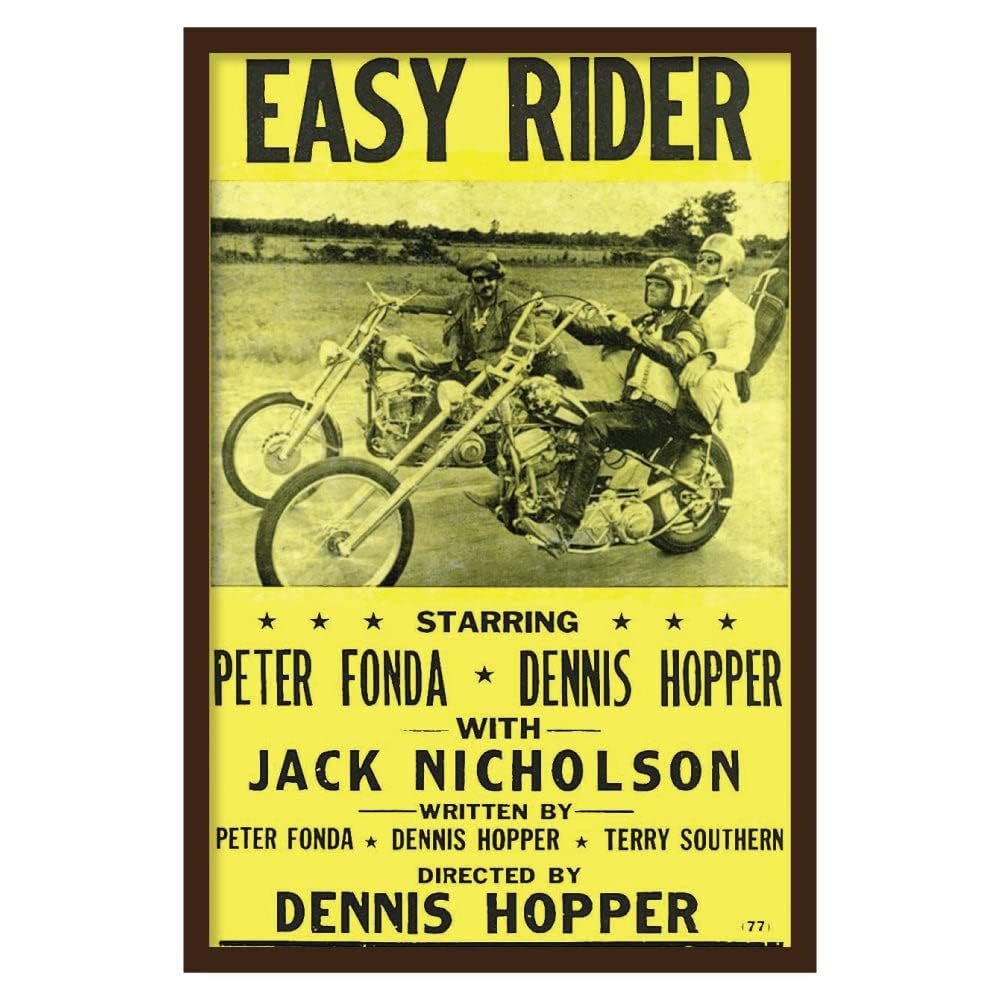
They weren’t the first superhero bikers: Peter Parker started riding a motorcycle in 1966. By 1970, however, Easy Rider had become a blockbuster hit that made riding across America look like a cool fantasy (even if Peter Fonda did die at the end). Evil Knievel was building his stardom as a stunt-biker, which would inspire Johnny Blaze’s debut as Ghost Rider in a couple of years.
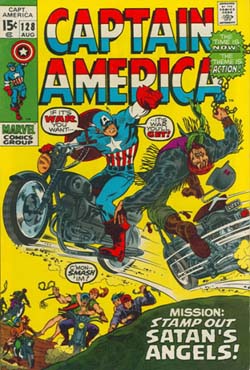 As discussed at the link up top, bikers had also been villains in movies for years and increasingly prevalent in comics. It’s no surprise that Captain America #128 is titled “Mission: Stamp out Satan’s Angels!” (Stan Lee, Gene Colan; cover by Marie Severin) — hmm, why does that name sound familiar?
As discussed at the link up top, bikers had also been villains in movies for years and increasingly prevalent in comics. It’s no surprise that Captain America #128 is titled “Mission: Stamp out Satan’s Angels!” (Stan Lee, Gene Colan; cover by Marie Severin) — hmm, why does that name sound familiar?
Still struggling with a lack of direction on the series, Stan and Gene apparently opted for a soft reboot. After Steve broke up with Sharon he then broke up with SHIELD (Fury framed him as a traitor to smoke out the real traitor. Cap wasn’t happy). That left him with nothing to stay in New York for, so why not split? And what could be cooler than splitting on a motorcycle? Except Steve has some trauma about them —

But he overcomes it.
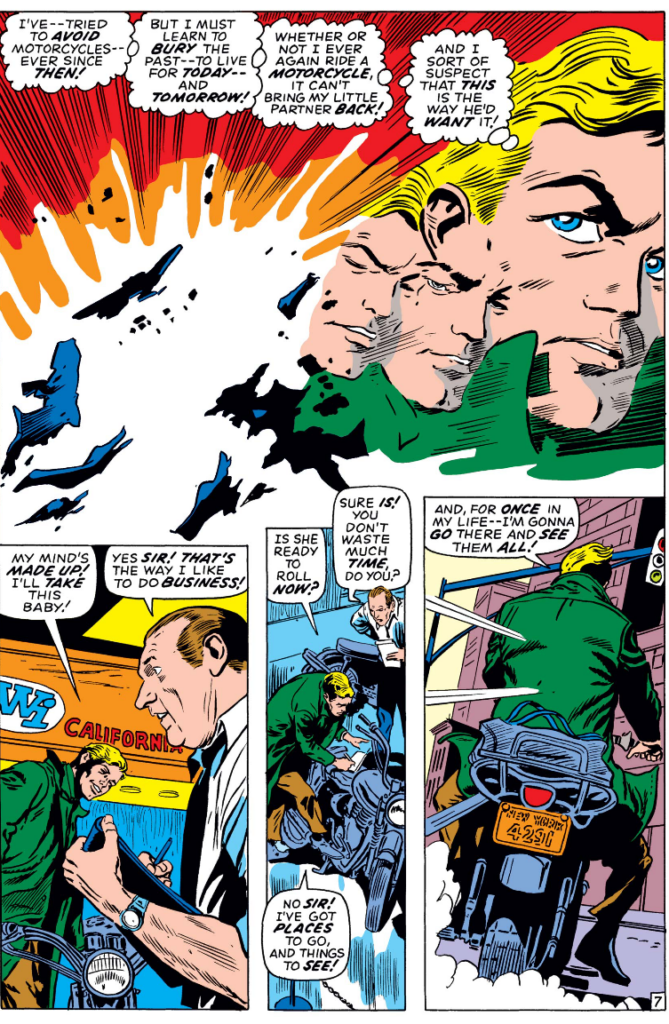
Of course, even on a bike, Steve can’t escape his destiny. Just outside the Big Apple there’s a music festival, and Satan’s Angels are crashing it.
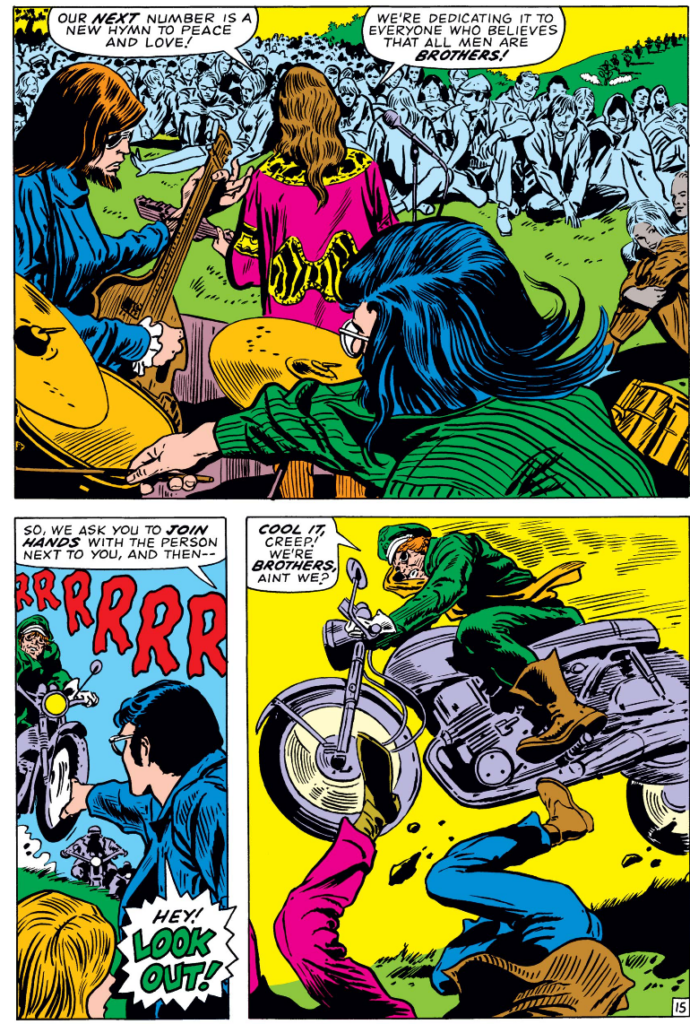
Cap takes them down but can’t avert tragedy.
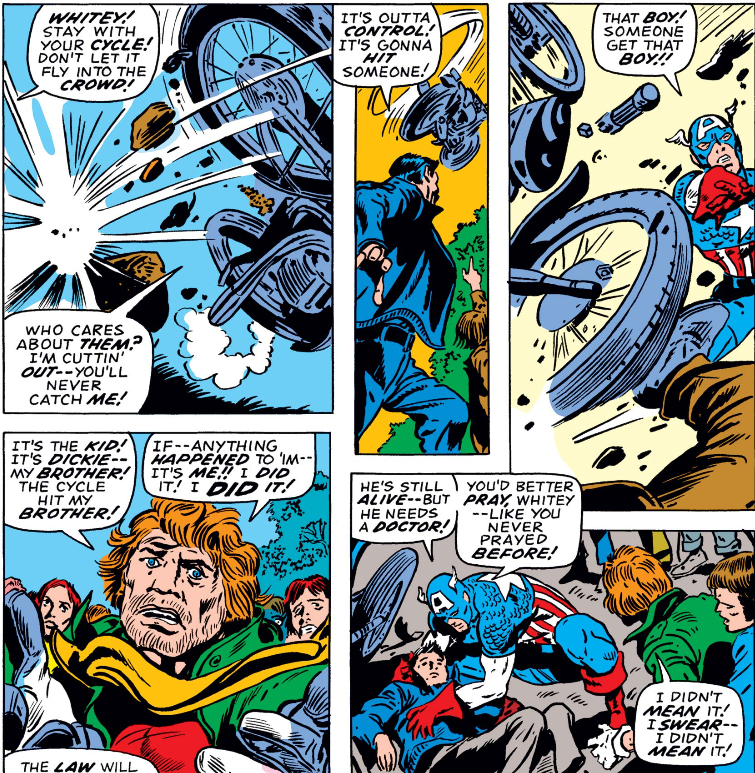
I assume this scene was inspired by the violence at the Altamont rock concert. At the same time it feels like another case of bikers vs. hippies, which comics have been doing for a while (as I discuss here).
The end result is not a good story but the bike stuck around. When I started reading Cap’s adventures a few years later, his motorcycle seemed as much a part of the series as Batman’s Batmobile; it plays a large role in the godawful 1970s Captain America TV movie.
By contrast I hardly remember Black Canary’s bike at all — wait, let’s backtrack.
 Following the debut of the Green Lantern/Green Arrow partnership, the two heroes and the Old-Timer — the Guardian of the Universe assigned to travel with them and see how the ordinary folks live — wind up in Desolation, an Appalachian mining town. In “Journey to Desolation” (Denny O’Neil, Neal Adams), it is indeed a war zone, as it says on the cover. It’s a one company town with a tyrannical boss—
Following the debut of the Green Lantern/Green Arrow partnership, the two heroes and the Old-Timer — the Guardian of the Universe assigned to travel with them and see how the ordinary folks live — wind up in Desolation, an Appalachian mining town. In “Journey to Desolation” (Denny O’Neil, Neal Adams), it is indeed a war zone, as it says on the cover. It’s a one company town with a tyrannical boss—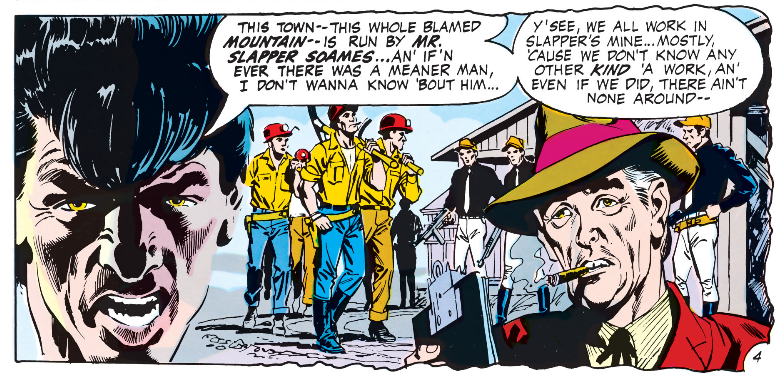
— who’s planning to hang a local folk singer for stirring the miners up. And he employs literal Nazis he somehow got out of prison.
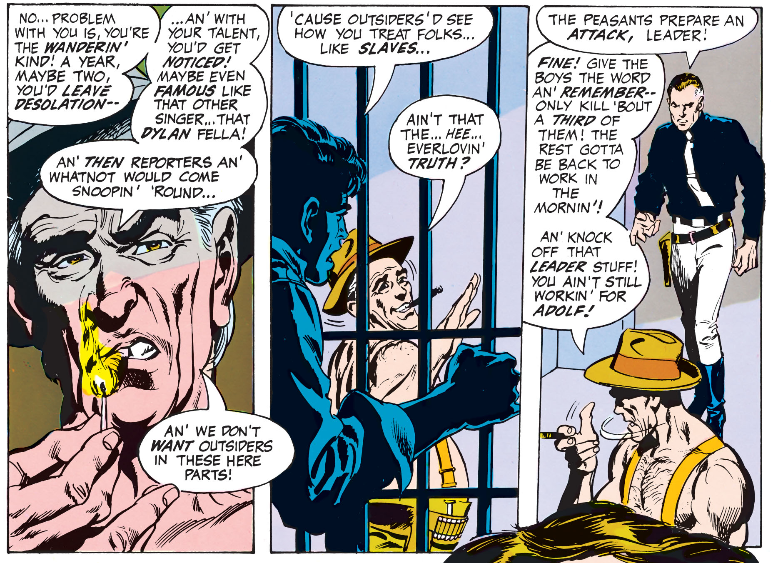
Jeez. At Attack of the 50-Year-Old Comics, blogger Alan Stewart once quipped about a Man-Thing villain named F.A. Schist (fascist, get it?). Positively subtle by comparison. Still, this issue does boast Neal Adams art —
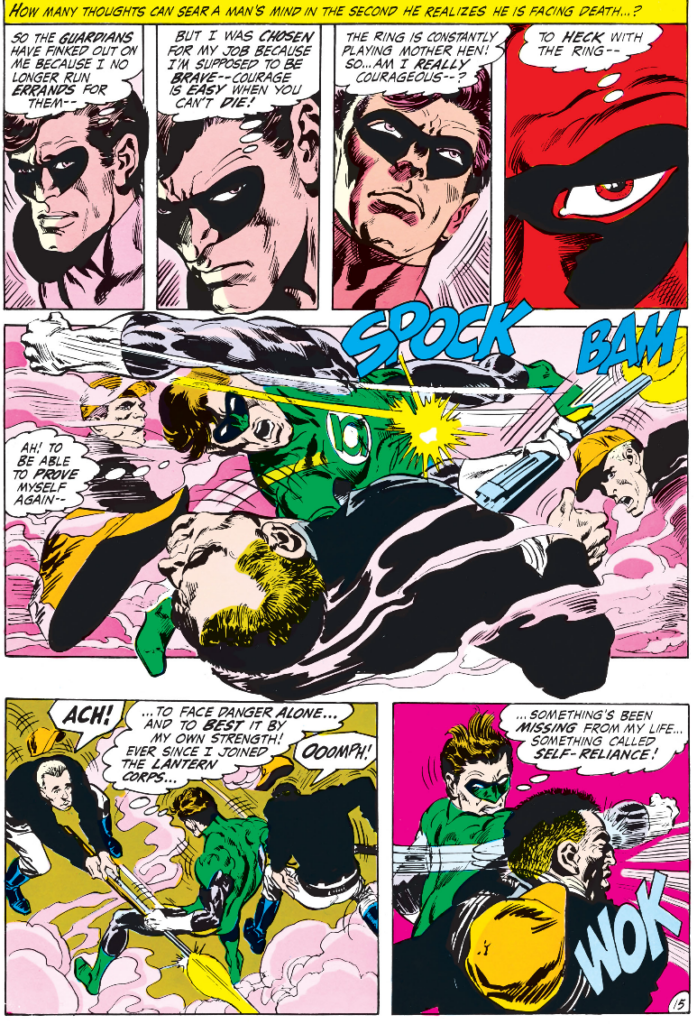
(I will pause and note that John Broome tackled this aspect of Hal’s character long before Denny O’Neil came along). — and a stronger story. Labor issues in the mining issue go back before I was born and they’ll doubtless continue after I’m gone. Or, as Ollie points out, after he and Hal have gone.
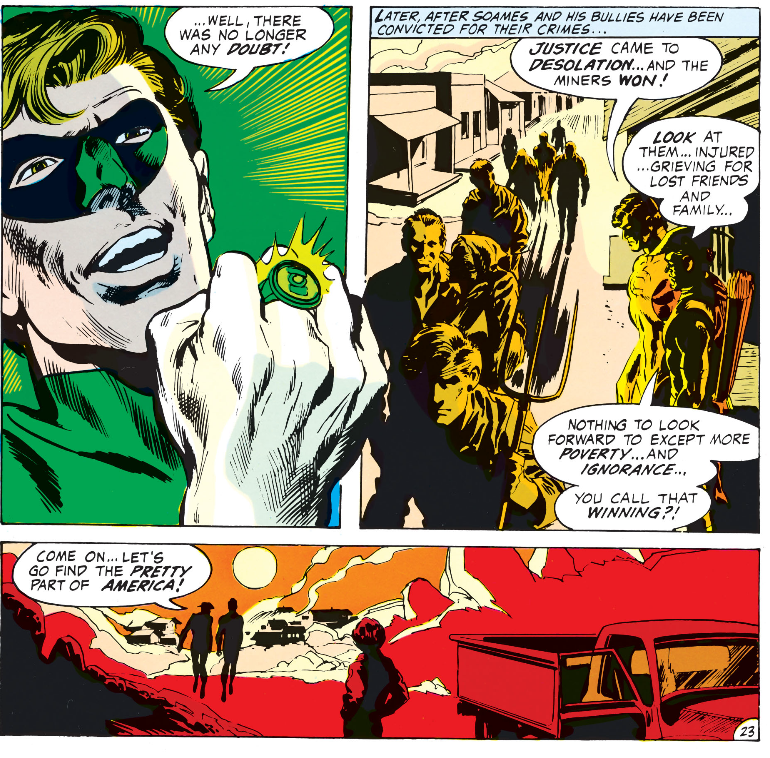
As I said about the first issue, however, it’s implausible to hear former millionaire Green Arrow lecture Hal about the life of the working class. It’s even more implausible to have Hal wonder which side he’d be on if Green Arrow weren’t serving as his conscience. True, he sided with the crooked landlord against his tenants in the previous story, but Soames is hanging a man without trial — no way is Green Lantern going to be down with that.
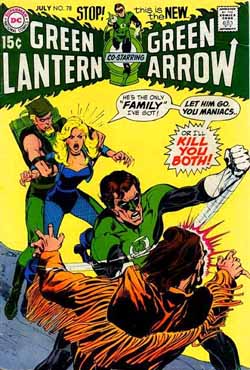 Now, back to the bike. In #78, Black Canary shows up in the book for the first time. In “A Kind of Loving, A Way of Death,” using the bike Superman made for her in Justice League of America #75 (I didn’t mention it at the time, not thinking it would be noteworthy later) to yes, discover America and heal her heart, still grieving for Larry Lance.
Now, back to the bike. In #78, Black Canary shows up in the book for the first time. In “A Kind of Loving, A Way of Death,” using the bike Superman made for her in Justice League of America #75 (I didn’t mention it at the time, not thinking it would be noteworthy later) to yes, discover America and heal her heart, still grieving for Larry Lance. 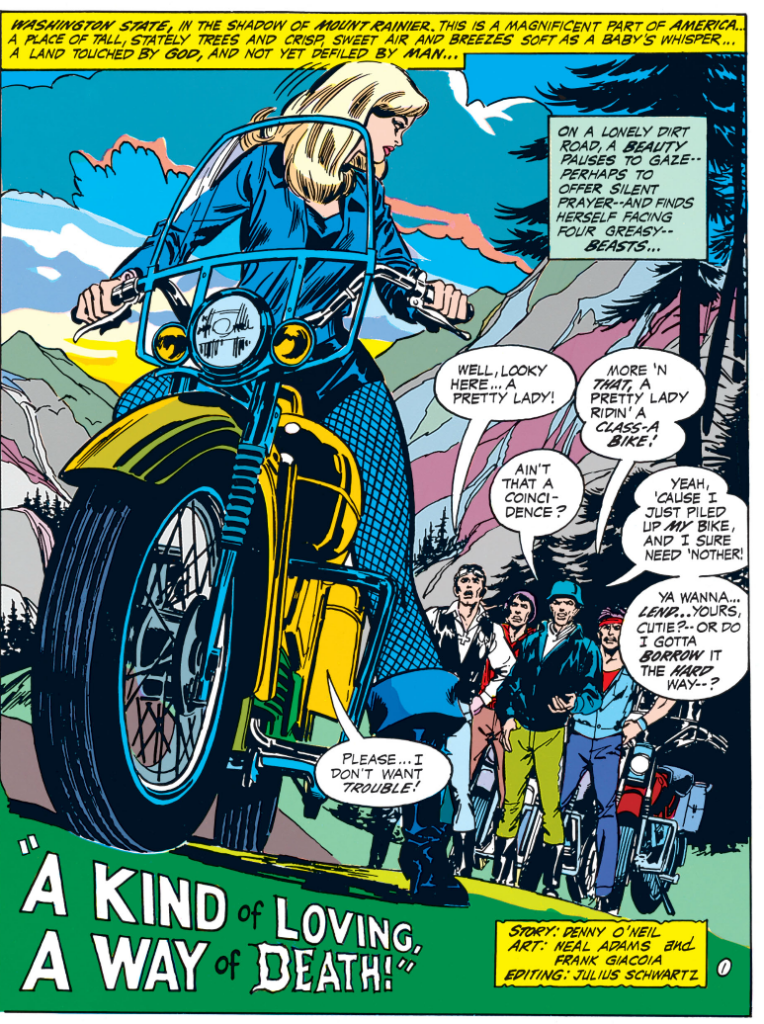 A bike gang shows up to harass her. She can cope —
A bike gang shows up to harass her. She can cope —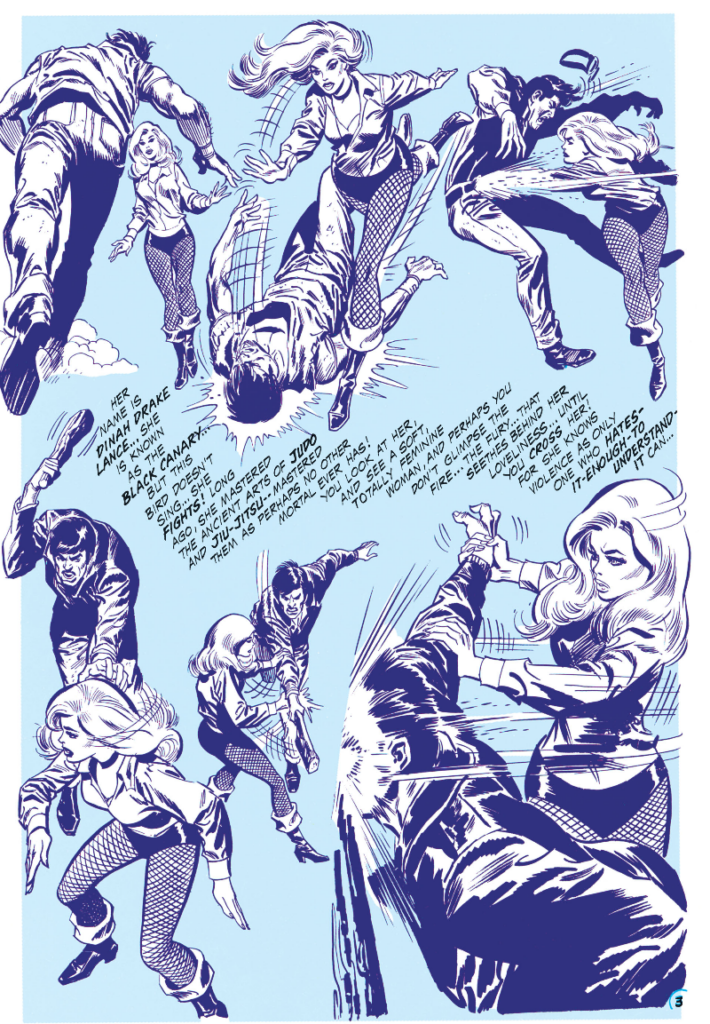
— until they fight dirty by hitting her with a car. She’s found and taken in by Joshua, a hypnotist/cult leader who has her join his family. Which turns out to be massively dysfunctional.
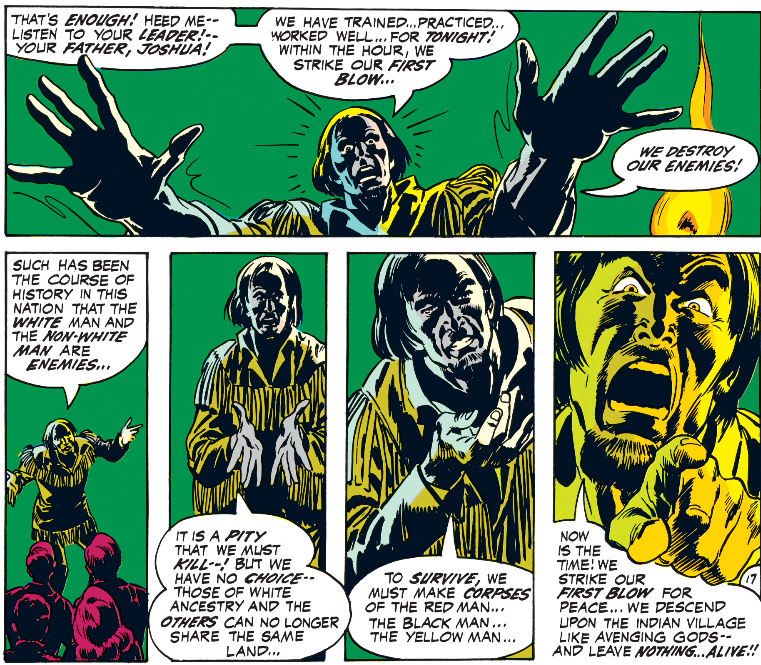
Joshua is clearly based on Charles Manson, whose family had gone on a murder spree the year before, with Manson hoping the murders would trigger a race war.
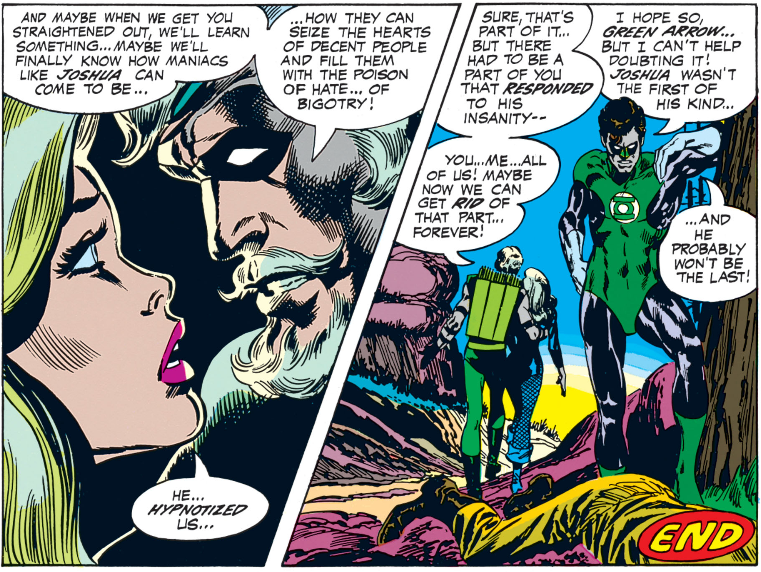
Once again, a downbeat ending. If I remember correctly, Dinah keeps biking for a while.

